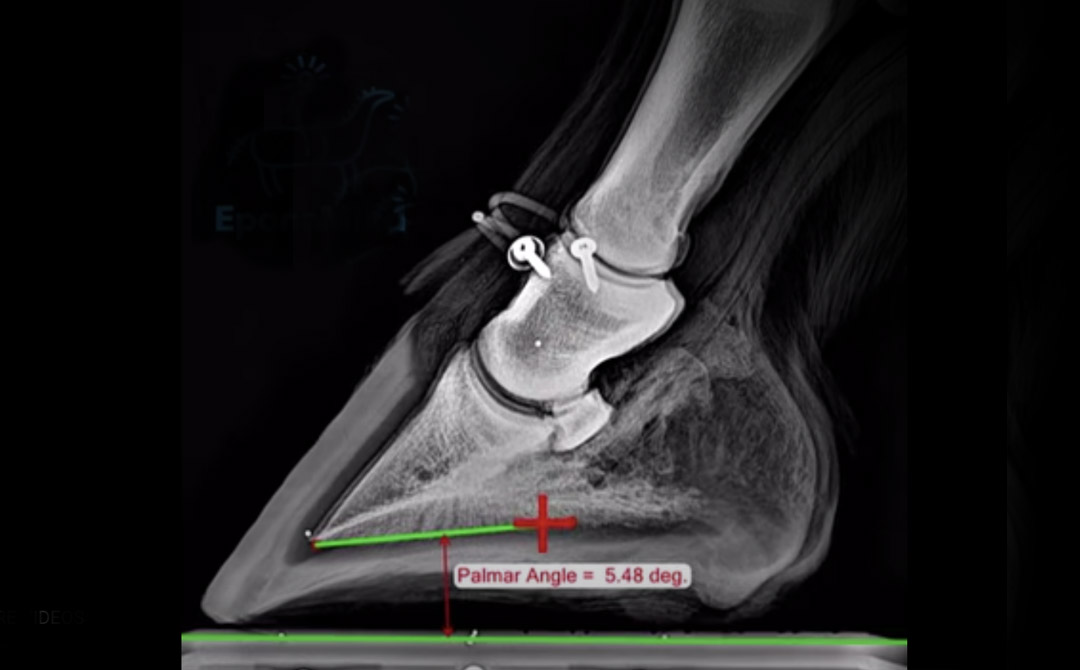Metron software measures the ‘Palmar Angle’ on a lateral hoof radiograph (among other measures). For a given x-ray generator, and using the Metron Block on a flat floor, the main source of misalignment is due to the alignment of the block + hoof when the image is taken. But in our study (shown here) we find the measurement to be fairly robust: as long as the hoof is properly aligned within plus-or-minus 10 degrees, the Palmar Angle measure is accurate to within 2/3 of a degree. In the video below, we go all the way to plus-or-minus 15 degrees of misalignment. By the way, it is pretty easy to achieve plus-or-minus 5 degrees just by eye-ball — hence, we think it is entirely practical to get a Palmar Angle measurement probably within a half of a degree. Another interesting thing about this video: the points placed on the image to measure the Palmar Angle was placed automatically by Metron’s Intellect Module (see Deep Learning Technology) and I think you may agree that over this range of alignment, the points were positioned as well (or better) than an expert human user would. You probably will want to replay this video a few times to examine everything that is going on.
In the next video (below) we show the effect of changing the height of the block that the horse stands on. The red cross shows the location of the central x-ray beam as the height of the block is varied. At one extreme, the beam points across the top surface of the block, at the other extreme (3″ higher) the beam points close to the location of the coffin-joint’s center of rotation. Watch the metal markers built into the block and you can see the effect. The measured Palmar Angle is 5.1 degrees plus-or-minus 0.55 degrees. Again, we think this shows that the measurement of the Palmar Angle is fairly robust to this change in imaging geometry.
Another thing that might affect the measurement of the Palmar Angle: the horse shifts its weight around and may load (and thereby compress) one hoof more than the opposite — and might this change the Palmar Angle? The images below are of the same hoof and taken within a few minutes of each other. In one extreme case, all the weight was on the leg being imaged. Again we see that Palmar Angle measurement is fairly robust, as it changes only by half a degree or so — meanwhile, the coffin-joint angle has changed by over 26 degrees!

